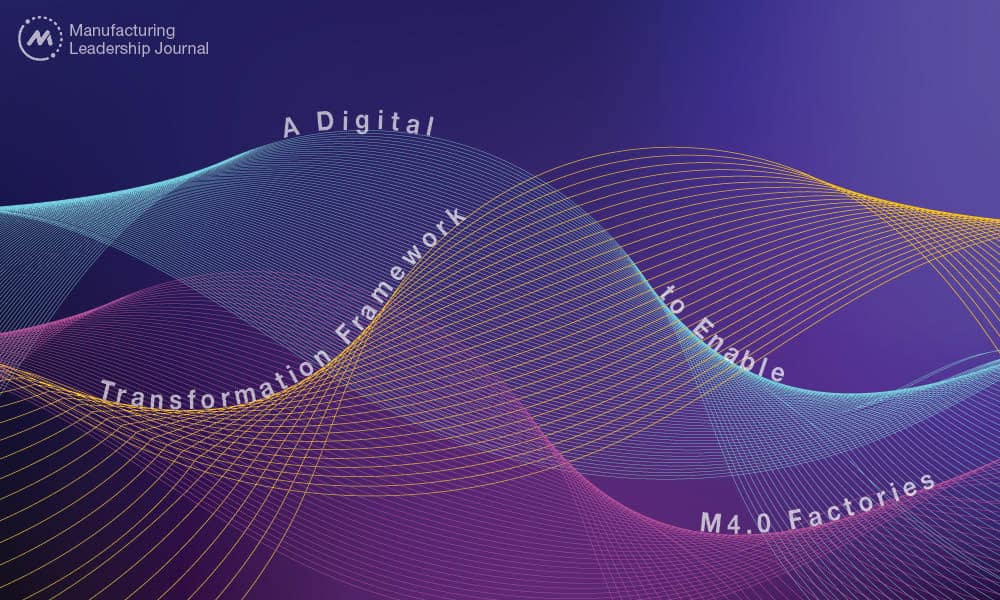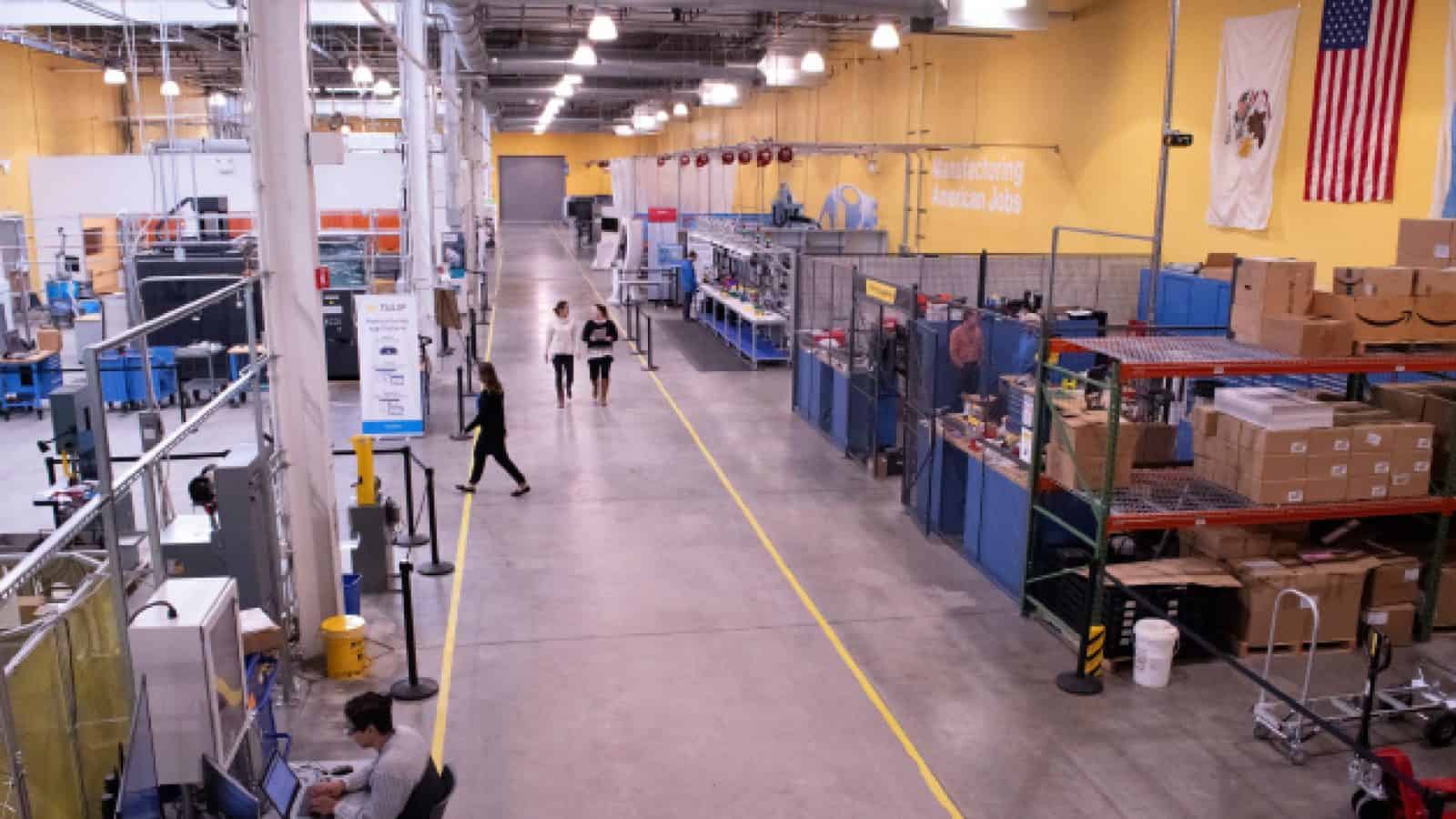A Digital Transformation Framework to Enable M4.0 Factories

To get to where they’re going, manufacturers must first make an honest assessment of where they are.

Investing in smart factory technologies will become a key area of opportunity for middle market manufacturers looking to differentiate themselves, improve operating costs and stay ahead of the competition. Before ramping up their investment in and implementation of those technologies, though, companies need to have a digital transformation framework and roadmap in place to ensure a thoughtful and prioritized plan. This will allow those advanced tools and processes to work to their full potential.
Having such a roadmap will also help chief financial officers, chief technology officers and other executives identify key priorities amid a high price environment and looming recession, ultimately helping to improve efficiency and save money.
Key elements of a digital transformation framework include an understanding of where the company is in its digital maturity journey, as well as an understanding of M4.0 factories’ implications on the workforce of the future.
Building a Foundation
For many manufacturers, upgrading legacy systems is a central step to becoming a truly digital organization. This may involve upgrading enterprise resource planning systems and inventory management systems, which can enable more precise supply chain visibility. A broader shift to cloud-based IT systems can also allow manufacturers to realize lower risk and lower cost of ownership of the data that lives there.
Overall network architecture is another crucial part of the foundation. Companies will need to integrate historically siloed IT and OT infrastructures, as we wrote recently in this article. This will enable “more circular connectivity throughout operations, better security, continuous improvement in efficiency and, ultimately, growth.”

“Key elements of a framework include an understanding of where the company is in its digital maturity journey, as well as an understanding of implications on the workforce of the future.”
There are significant opportunities for middle market manufacturers to evaluate whether their current digital foundation will suffice in the increasingly connected future. Here are what the stages of a digital maturity model might look like, as RSM lays out in its digital strategy guide:
- Non-existent: “There’s little to no use of technology to facilitate daily operations.” Many processes and systems are manual and production is run largely by paper work orders. The use of automation is not widespread throughout the organization, and very little production data is available for relevant analysis.
- Basic: “There’s a limited use of digital solutions to perform specific tasks.” Some aspects of operations have been automated and/or digitized, and teams are using some operational data to inform decisions. The production floor is still highly manual. The foundational ERP system hasn’t been optimized for all processes but provides basic production data that can be used for retroactive production volume analysis.
- Market contender: “Most day-to-day tasks are facilitated through technology and managed through current systems.” Teams use technology to streamline and improve operations. A foundational ERP system and/or other advanced solutions allow teams to manage supply chain and operations more efficiently. The company can extract relevant data from multiple systems for analysis, but that analysis is still manually intensive and mostly retroactive. Predictive capabilities are still somewhat limited.
- Industry leader: “Competitors and similar organizations view your organization as the benchmark for digital maturity.” Teams leverage advanced software and solutions for shop floor automation and data gathering. Data is automatically integrated across systems and platforms and fed to the business via predictive capabilities, which steer operational performance and inform decision making.
- True innovator: “Your organization is on the cutting edge of technology and recognized as a digital pioneer.” The organization has implemented and trained its workforce on the use of predictive data analytics, machine learning and automation capabilities that allow for continual improvement throughout the operation. The company also has advanced supply chain visibility that allows precise supply and demand synchronization.
A third party can help in assessing where teams across the organization and across business functions fall along this digital maturity spectrum.
Security and Controls
Cybersecurity is another crucial foundational area for industrial companies looking to further their digital capabilities; organizations adopting advanced technologies need to raise the bar for how they protect their information. In the context of digital production and M4.0 factories, where more devices and operations are connected via one or multiple networks, the importance of cybersecurity is even higher.

“Today’s manufacturers need ‘new-collar’ workers who have more technical, advanced skills than traditional white-collar office workers or those in blue-collar jobs.”
When it comes to building cybersecurity for industrial control systems, companies should understand where there might be gaps in the four key areas of oversight, people, processes and technology.
- Oversight: Organizations need to have clear governance and strategies in place around the security of their industrial control systems and ensure that processes incorporate board and executive oversight on everything from understanding cyberthreats to navigating cyber insurance to coordinating with law enforcement in the event of a breach.
- People: People should also have a thorough understanding of the company’s protocols and security organization structure at the enterprise level.
- Process: Companies need to have consistent cybersecurity considerations built into all their processes to ensure not just physical security but also business continuity in the event of breaches.
- Technology: This includes security monitoring, threat modelling, intrusion detection and protection, endpoint security, data loss prevention and security architecture and design.
Labor Impact: ‘New-Collar’ Workers
There may be concerns from employees at all levels of the organization about how advanced technologies will change what day-to-day operations look like. But the main issue here isn’t technology replacing humans throughout the organization. Rather, it’s about how manufacturers should adjust the digital skills they seek out in potential employees, and how best to train existing employees to ensure they keep up with those skills, especially in the areas of analytics and automation.

“For true success, businesses need to evolve constantly and regularly question where there may be opportunities for improvement.”
“Today’s manufacturers need ‘new-collar’ workers who have more technical, advanced skills than traditional white-collar office workers or those in blue-collar jobs, especially in the areas of automation, analytics, robotics and the Internet of Things,” we wrote in early 2022. “While proficiency in machinery is essential, dual knowledge of analytics or advanced robotics is in high demand.”
Organizations will need to understand how this affects their recruitment and training strategies, as well as their investment priorities.
Questions to Frame the Path Forward
There are a few key questions that can help manufacturers chart a path toward ensuring they are M4.0 ready and will be able to use smart factory technologies to their full potential:
- What value do you believe these technologies could drive for your organizations?
- Where does your organization currently fit in the digital maturity journey laid out above? What are the reasons for its current position along that journey?
- What investments or plans will be needed to make this progress?
- What will the changing workforce landscape—and the increasing importance of digital skills—mean for your organization?
In many ways, endeavoring to become a truly digital organization is a never-ending project. For true success, businesses need to evolve constantly and regularly question where there may be opportunities for improvement. M
About the authors:

Jason Alexander is partner at RSM US LLP.

Daniel Wheadon is partner at RSM US LLP.

Jake Winquist is director at RSM US LLP.
